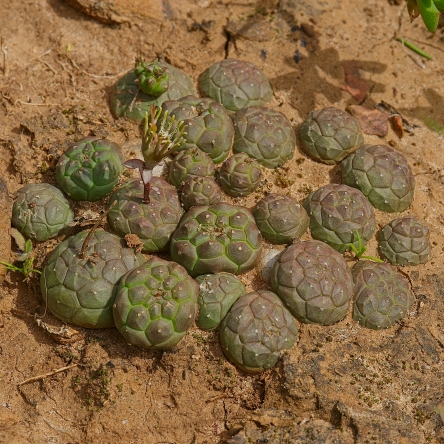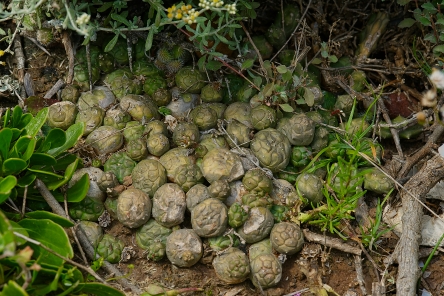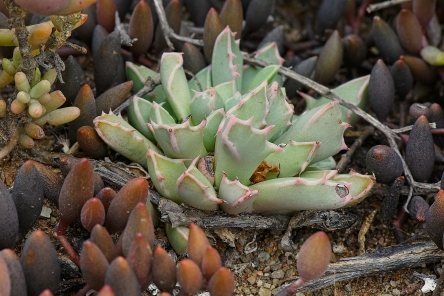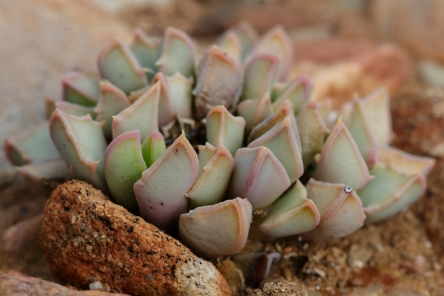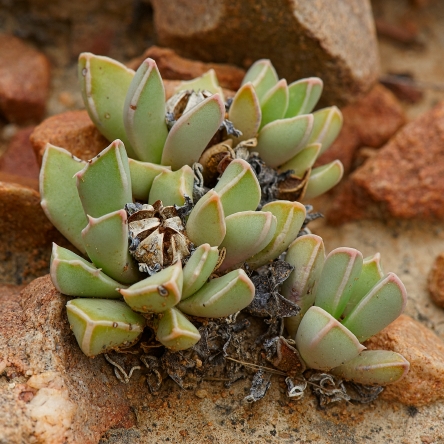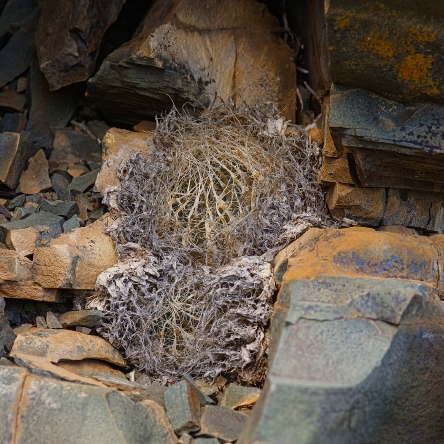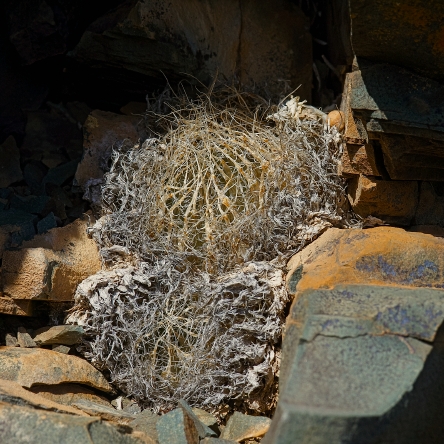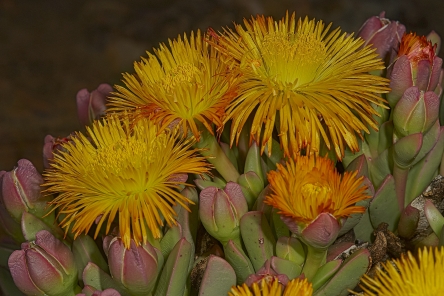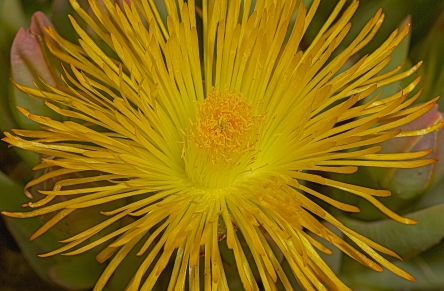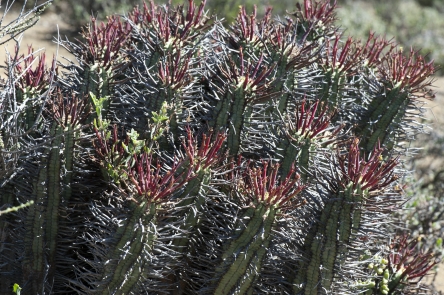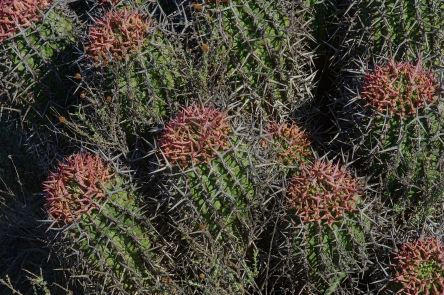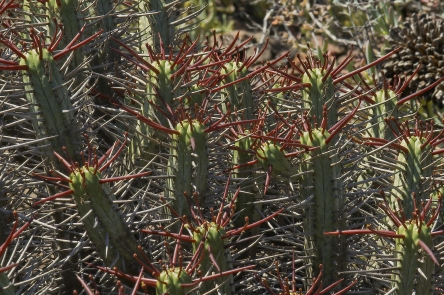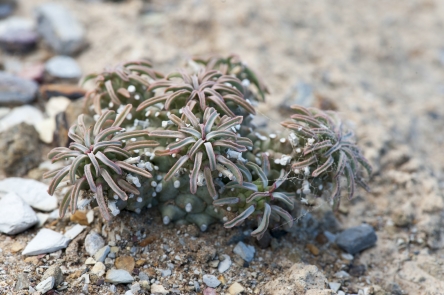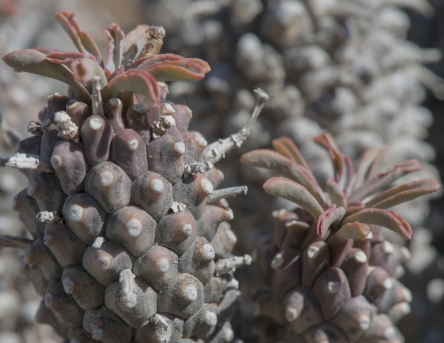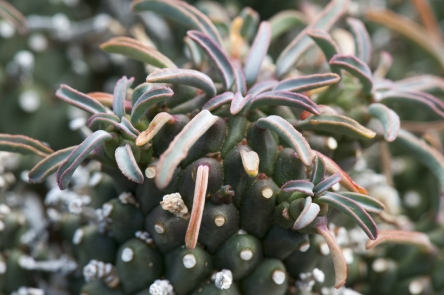When I first saw these little beauties on a hillside on the outskirts of Calitzdorp I had no idea what they could be, but after some searching in my library I found the original description of the species by Ernst van Jaarsveld in Bradleya 1994. Although it has since been found in a few other places and is now known to occur from Calitzdorp in the west to De Rust in the east it is considered critically rare. It grows in the shade of shrubs and often forms dense clumps. The photograph was taken in the first week of May last year.
Tag: South African succulents
Euphorbia globosa
Aloe africana
Although the species name suggests a wide distribution, A. africana occurs only in a rather limited area in the Eastern Cape. The gracefully upcurved flowers set it apart from similar species.
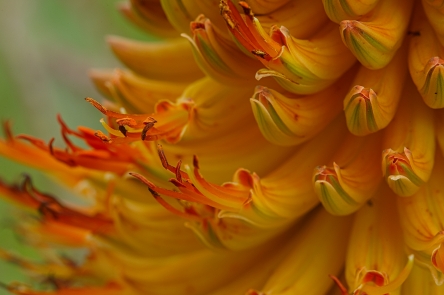
Euphorbia micracantha
Faucaria bosscheana
Haworthia decipiens var. decipiens
Today’s post is the first in what is intended to become a daily posting of one or more interesting and beautiful pictures (mainly) of succulent plants. The text will be kept to a minimum, so as not to distract from the images. These post will be an addition to, not a replacement for, the usual ones.
You may also notice that I have added a photo gallery to the blog. Enjoy!
We kick off with two pictures that are identical, except for the fact that one was taken with a diffusor. That one seemingly little difference produces quite a different result. One can not really say that one picture is better than the other, but they give different information and also evoke a different feeling. When the light is harsh like in this case, it is worth taking a couple of pictures with and without a diffusor or reflector.
Some Poellnitzia pictures
It keeps amazing me how sometimes you decide to do something and you end up with a totally different thing from what you had in mind. This post is a case in point.
I thought it would be a good idea to write a post on a certain aspect of plant photography that is often neglected (paralleling the subject) and went out into the garden to take some pictures to illustrate the principle. As it happened, there was a nice specimen of Poellnitzia in flower that seemed to fit the bill. Because the inflorescence in these plants is rather long and thin, even the gentle breeze that was blowing made it almost impossible to make a sharp picture. Quite a while ago I bought a gadget especially for occasions like this, where you have to stabilise something that is moving in the wind. It is called a Plamp (plant clamp) and has a couple of other uses as well. Although I rarely (have to) use it, it may make the difference between a good picture and a bad one (or none at all). Have a look at http://www.tripodhead.com/products/plamp-main.cfm for more info.
Even after the inflorescence as such had now been stabilised, the individual flowers were slightly moving in the wind. This defeated the object of showing the differences in depth of field as a result of different camera angles. After the rigmarole of setting up camera, tripod and Plamp, combined with the fact that a flowering plant of this species is not a common sight, I was rather reluctant to just pack up and leave. So I decided to have another look at what was there. As usual, I started with a couple of what my friend Neil Curry, a retired filmmaker, uses to call establishing shots, showing the subject in its environment.
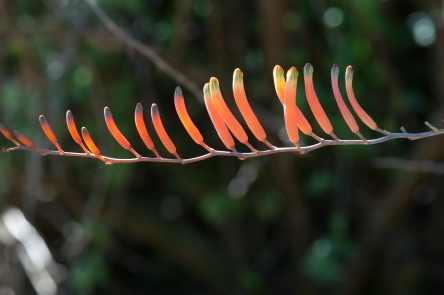
The background was nice and dark but because I did not compensate for its darkness this is how the picture turned out.
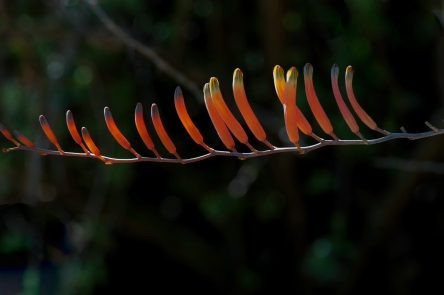
This is what it looked like after taking a second picture with one stop underexposure and some fiddling in post production. You will notice that I also removed some of the nasty light blotches in the background.
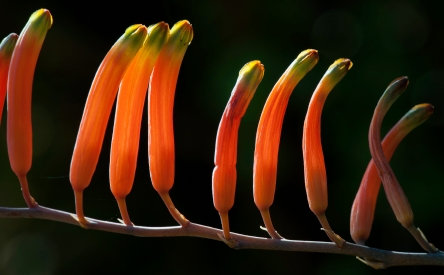
After this, I went somewhat closer up and photographed only the middle part of the inflorescence.
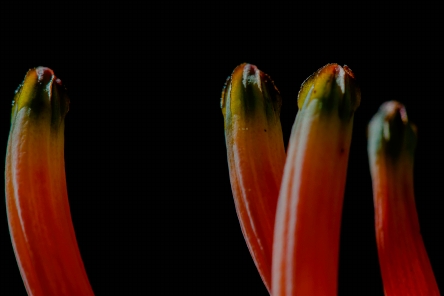
Because the tips of the flowers have a unique shape I decided to make a picture of those at natural size. The flowers are so special in fact, that a whole genus (Poellnitzia) was established to accommodate just one species (rubriflora).
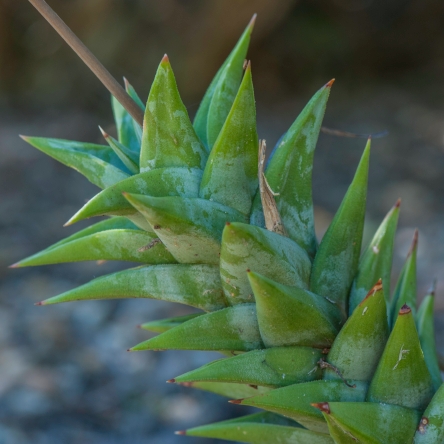
The plant itself is similar in shape to species in related genera (Aloe, Astroloba, Haworthia) but the colour is rather special.
Machairophyllums flowering after fire
In an earlier post I referred to a fire that raged on the nearby Rooiberg about a year ago.
Approximately half a year after the fire we discovered a great number of flowering Machairophyllums in the burnt areas.
Although there are several populations on the Rooiberg, we had never found a flowering specimen before and we wondered why that was. Had we never been there in the right time of the year and of the day (the flowers open after dark) or did the plants, like so many others occurring in fynbos, need a fire to trigger flowering?
Last Sunday we decided to visit the mountain again and see if we could find out if the Machairophyllums in the not burned areas had flowered so profusely last year as well. This is easy to establish because the fruits stay on the plants for a long time. We saw a couple of hundred plants in perfect condition, but only very few with (max. 2-3) fruits. If you look at the accompanying pictures (taken last October), you will see how profusely the plants flower after a fire.
All in all It seems safe to say that this species of Machairophyllum -and probably the others too- may not be totally dependent on fire to trigger flowering, but that it certainly makes an enormous difference.
When I say “this species of Machairophyllum “ you probably wonder exactly what species we are talking about here. Comparing all the information from literature, I come to the conclusion it is most probably M. albidum. Apparently other people too have a problem deciding which is which in this genus: The Illustrated Handbook of Succulent Plants recognises 7 species but also says “The genus is under study and four or five species may only be distinguishable”.
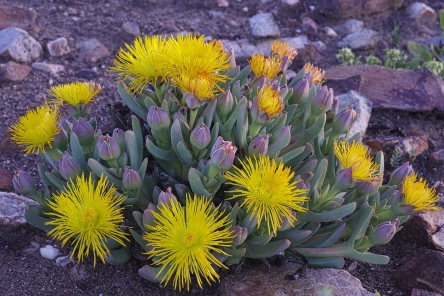
This picture was taken at 6.32 PM, when there was still just enough light to use
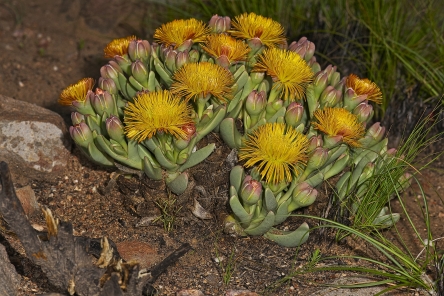
Fifteen minutes later the light had gone. so I had to use flash for this and the next two pictures
Two interesting Euphorbias from the southern Great Karoo. Part 2: The start of a hybrid swarm?
Because this area harbours a variety of interesting succulents, we had high expectations of what we might come across. Nevertheless, the rest of the trip was rather boring. That is, till the moment George pointed out a big clump of what we both thought was Euphorbia stellispina, in a field next to the road. Finding that species in itself, would have been nice enough, but when we walked up to the plant, we discovered that it was much more special: about all the plant’s features were perfectly in between those of E. stellispina and E. heptagona. The result was spectacular.
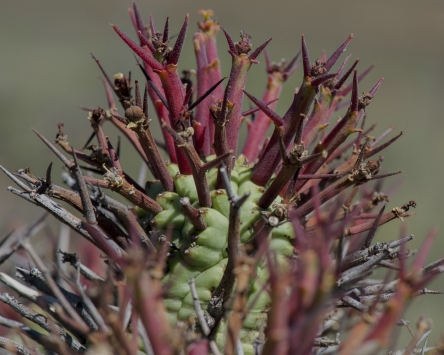
Two pictures of the purported hybrid
When we searched the immediate surroundings, we found plants of both these species, which strengthened the idea that our plant was a hybrid between the two.
To make the find even more exciting, after some looking around we came across another hybrid between the same parents.
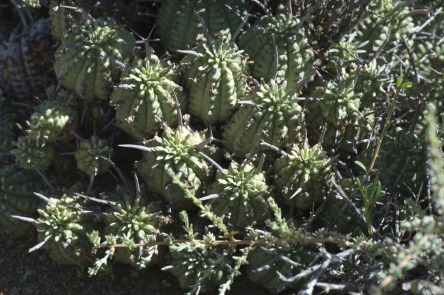
More interesting than beautiful
Here the results of the mix are totally different and far less appealing. On the other hand it is exciting to witness what may be the beginning of a hybrid swarm and it would be interesting to follow the population’s behaviour over some time.
Two interesting Euphorbias from the southern Great Karoo, part 1: E. braunsii
Last month my friend George Hatting and I decided to spend a Sunday looking for plants in the Prince Albert area. We had both been there before and discovered some interesting plants. After a nice drive over the spectacular Swartberg Pass, we arrived in Prince Albert and took a gravel road road from there heading east. Shortly after leaving town, we stopped at a place that looked promising and found a couple of beautiful small Euphorbia’s. They clearly were plants of E. braunsii, which is well known from the area.
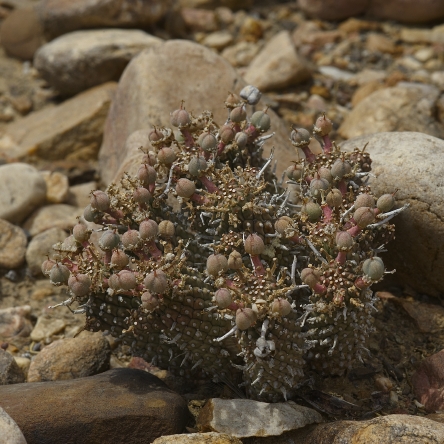
This is how E. braunsii usually looks in the wild (well, normally without fruits, of course). Photo taken near Prince Albert on 10 Oct. 2012.
The peculiar thing was that they were in leaf, something I had never seen before and which is apparently a rare phenomenon. Digging into my literature I found no mention of the leaves, let alone a description or picture of them. The most likely explanation for this is that the leaves are short lived, as in the related (or maybe even identical) species E. rudis from Namaqualand and Namibia. Whatever is the case, I was quite chuffed to be there right on time to photograph the leaves, especially as they add an extra dimension to an already charming plant.
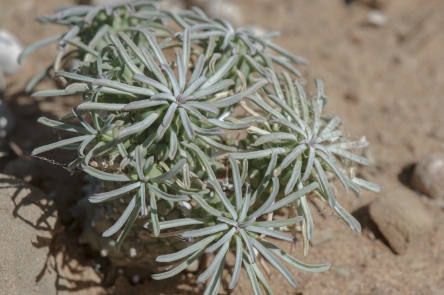
The four pictures above were taken on 24 Febr. 2013
Next time we will look at a natural hybrid we discovered on this same trip.

